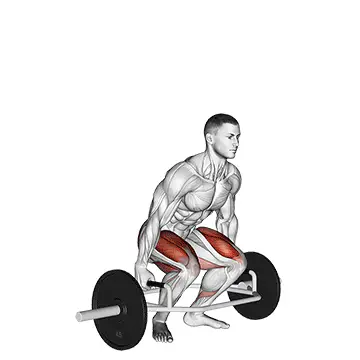Standing Hamstring Stretch

Muscles Involved
The standing hamstring stretch primarily targets the hamstrings, which consist of three main muscles located at the back of the thigh: the biceps femoris, semitendinosus, and semimembranosus. These muscles play a crucial role in bending the knee and extending the hip. Additionally, the stretch can involve secondary muscles such as the glutes, calves, and lower back, promoting overall flexibility and alleviating tension in the posterior chain.
Top Mistakes
- Rounding the back: Maintaining a neutral spine is essential; rounding the back can lead to strain and reduce the effectiveness of the stretch.
- Locking the knees: Hyperextending the knees can cause discomfort and injury, making it important to keep a slight bend in them.
- Pushing too hard: Forcing the stretch can lead to muscle strain; it’s vital to stretch within a manageable range of motion.
Execution Tips
- Start by standing tall with your feet hip-width apart, ensuring your weight is distributed evenly on both feet.
- Extend one leg forward, placing the heel on the ground while keeping the toes pointed upwards.
- Gently hinge at the hips, lowering your torso towards the extended leg while keeping your back straight.
- Feel the stretch in the back of your thigh and hold that position; avoid leaning too far forward.
- Hold the stretch for 15 to 30 seconds before switching to the opposite leg.
Workouts
The standing hamstring stretch can be seamlessly incorporated into a dynamic or static stretching routine. It’s often beneficial to perform this stretch as part of a warm-up or cool-down phase. A suitable sequence might include:
- 2-3 sets of 15-30 seconds on each leg, holding the stretch.
- Complementary exercises could include lunges, quadriceps stretches, or yoga poses such as downward dog, which engage the same muscle groups.
Conclusion
The standing hamstring stretch is an effective exercise for enhancing flexibility and mobility in the hamstrings and surrounding muscles. By incorporating this stretch into your routine, you can improve your overall functional movement, reduce the risk of injury, and alleviate discomfort related to tightness in the lower body. Consistent practice helps maintain muscle elasticity, supports proper posture, and enhances performance in both athletic and daily activities.



